
First, I want to thank Scott for inviting me to be his guest blogger for the second time here at Photoshop Insider. It’s always an honor and a pleasure to make his accommodation. Also, let me say that today’s post in no way reflects the views of “this station.” Today’s post is meant to be more than a social observation, but rather a revelation of what’s happening in the field of wedding photography today, why it happened, and what can wedding photographers do about it. It may seem to be a “Doom and Gloom” read but is not meant to be. It is meant rather to be an “eye opening” read that I hope shakes all sense of complacency from our bones, and fires us up to do something about the current state of affairs.
As I researched and wrote this post, I was amazed by the confluence of circumstances that have completely changed how most wedding photographers have done business for years. Most amazing was the speed at which these confluences collided and changed things in just a matter of 24-36 months! And all these changes mean that we must do business in a brand new way if we wish to succeed.
This post is meant to be Part 1 of a two part post. The reason, as I continued my research and writing I was topping out over 2,900 words and I still had about 1,500 to go – whew! So, although most of this post reads like “Doom and Gloom” for wedding photography, I scatter tiny rays of hope throughout. Part 2, to be entitled “Dreams and Opportunities” or something like that ;) , will point wedding photography readers towards concrete strategies about how to grow their wedding photography business stronger and better than ever!
I hope you enjoy today’s read in the social observation context in which it was written. Read on if you dare….
Wedding Photography – The State of the Union
Are Weddings Broken?
Last year at an Imaging USA luncheon with some of the most prestigious photographers in attendance, one of the top wedding photographers in the country said, “Weddings are broken.” I think this statement reflects the state of wedding photography for many photographers nationwide.
I also recently hosted our PhotoPro Expo in the Greater Cincinnati area two weeks ago and discussed this very same topic with several wedding photographers attending. Most agree that weddings are currently “upside down,” meaning the sales success many of them enjoyed in years past has all but evaporated. Back in 1986, my studio had a sales average of $2,600 per wedding on 72 weddings and watched it grow steadily over the years. The fact of the matter is that photographers would “kill” for my 1986 average these days.
On a more personal note, I know of three wedding photographers, photographers that were the leading wedding photographers in their respective cities who were all but out of the business in 2010. One drives a large cross country rig (and loves it BTW), another is driving limos to make ends meet, and another 30 year wedding photography veteran works at a popular retail outlet for the same reason – no business. (He loves his new part time job too).
The turn down in sales is not just limited to wedding photography either. It’s encompassing all areas of the photographic profession including family portraits, high school seniors, and all the services professional photographers have been offering their clients for the last 40-50 years.
And the real fact of the matter is that it has all happened in the last 24-36 months. Photographers were having their best years in 2006 and 2007. Things started to go south with the crash of the economy in October of 2008. Although the “Crash of ‘08” certainly played a major role in the downturn of wedding sales averages, I believe the downturn was due to more than this single event.
Who Moved The Cheese?
This is where things really get interesting when analyzing this significant downturn. The photographer’s “Cheese” has certainly moved, meaning that what we always thought we could count on is no longer there. (See Spenser Johnson’s Who Moved My Cheese [link].) Let me hit on a few of the “cheese movers” that I feel have significantly changed the photography industry.
The Economy Takes A Dive:
The economy figures heavily in the market downturn. In the boom years the consumer was doing great and loved to spend money – consumerism was at an all time high. Folks were feeling “flush” with the stock market at 14,000. These “folks” I refer to are the moms and dads paying the big bucks for even bigger weddings. I have a client who placed a $40,000 wedding order, the market crashed, and to this day she has never completed her order. When did this happen? In late 2008.
Don’t get me wrong; I’m not trying to take a “braggadocios” position – this was one of those once in a lifetime “home run” orders most photogs will experience during their 20-30 year careers – more on hitting the “home run” later.
Sure, my studio has worked for and achieved a great wedding average over the years – over the years being the operative words. Like they say, hard work, nose to the grindstone, and a little luck all will help lead you to real success. Think Malcolm Gladwell’s “Rule of 10,000 hours” in his best-selling book “Outliers, The Story of Success” [link].
After 2008 and moving into 2009, the clients who could still afford the big buck events were cutting back regardless of their ability to handle any budget. I was talking with one of the high end caterers in Cincinnati, Ohio in 2009. He that told me his wealthiest clients were telling him to cater the events with a less ostentatious look to the affair – dress it down a bit – but it was OK to still charge the same for the event. In other words, don’t flaunt the wealth in front of those who were really hit hard. Don’t we all wish we had clients like that!
The point I’m trying to make is this. The market crash hit all vendors, photographers included, regardless of the market segment they served. The consumer was cutting back, and appeared to be cutting back across the board.
The Wal-Mart Effect:
OK, you might think I’m crazy but I think Wal-Mart was one of the “cheese movers” too. Why, you ask? Well, first let’s look at the average age of brides and grooms getting married. USA Today did an article a few years ago on the average age of a couple getting married – it stated that the average age for first time marriages for brides was 25.6 years old and the average for grooms was 27.5 years [link]. This figure has not changed much over the last few years since the USA article was first published.
Now let’s look at I call the “Wal-Mart Effect” more closely. In 1985, about the age today’s bride and groom were born, there were 882 Wal-Marts throughout the US. That number has grown to over 8,400 worldwide, nearly 10x the figure 25 years ago. What’s my point? Today’s wedding buying generation has been bombarded their entire lives with “…that we are lowering prices everyday” in Wal-Mart, Target, and K-Mart ads. Every retailer is offering deals and today’s bride and groom want a deal too. Today’s wedding buying population is, like it or not, a Wal-Mart population – looking for the best deal all the time, even in their wedding photography.
Want proof? Just look at Craig’s List’s rise in popularity over the last 3 years. Heck, Craig’s List was only in 14 cities in 2003. Now Craig’s List is 7th place overall among web sites in the United States (per Alexa.com on June 28, 2010), with over 49.4 million unique monthly visitors in the United States alone [link]. And, there are lots of couples shopping Craig’s List for their wedding photographer.
Want more proof about this deal craving public – just look at the exploding popularity of Groupon. Groupon just started a little over 3 years ago – October 2008 to be exact [link] an now is having a major impact to how people spend money. Uhmm, any coincidence with people being out of money (October crash) and wanting the best deal they can find? I think so.
Wait, there’s still more. Did you hear? Bella Pictures [link], the company most wedding photographers love to hate was, on January 28, 2011, sold to CPI Corporation. In a statement, David Meyer, CPI’s chairman said, “We are very excited to enter the $6 billion dollar wedding photography and videography industry and significantly expand our mobile photography operations.” [link] You’re asking, “Who in the world is CPI, Corp?” Just read the entire link above and you’ll find, “CPI runs about 3,000 portrait photo studios mostly in Sears and Wal-Mart.” Yes, wedding photography has come to Wal-Mart! The circle is complete!
The bottom line is this – today’s customer is looking for a deal – and not just in photography, but everywhere! This should all be pretty scary to the small photography business, any business for that matter, doing business the same way they’ve been doing it for years. Is there a solution to this low price quandary? You’ll have to wait and see in Part 2. Now let’s look at a few more “cheese movers”.
Interest In Digital Photography Explodes!
We began our transition into digital when I photographed a few portraits in mid 2000 and then my first wedding on December 30, 2000. What was the first big market mover back then in digital photography? It was the introduction of the Fuji S-1 Pro, the first reasonably priced DSLR to hit the market. The ONLY choice before that was Kodak’s DSC 500 and 600 series cameras [link] with a cost about $20,000. Kodak lowered the price on their cameras to about $7000 to compete in May 2001. Still Fuji’s S-1 Pro was still hitting the shelves at $4,000 [link]. That’s the camera I shot my first digital wedding with and the images were fantastic for a 3.2M camera.
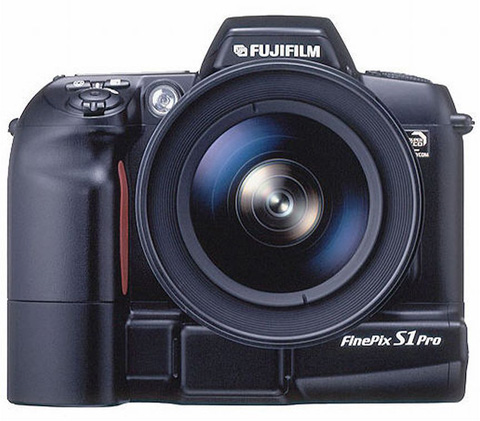
Photographers were slow to adopt digital with many holding out and still shooting film as late as 2005 and 2006. Even Kodak thought there was still a market in film when they entered into a $100M 20 year agreement with the Chinese firm the Lucky Film Company in 2003. I was flabbergasted when I heard this news from a Kodak official with whom I was having dinner about that same time. Digital was clearly the future for photography – no exceptions! I guess this deal was more lucky for Lucky than Kodak as things turned out. On the other hand, consumers were on a tear to acquire the new digital cameras and clearly out paced the pro’s acceptance of the new technology.
The real market mover came when was Canon’s 30D introduced in mid May, 2000. Then came the D30, and then in 2003 the Canon D60 – cameras in the $1,500 price range. By mid 2004, most photographers were jumping on the digital bandwagon – the price was right and the exposures were FREE!!!
Still the photography market had not changed that much. Customers were still willing to seek out the experienced pro for their daughter or son’s wedding photos. Many were still apprehensive about the whole “digital thing” but after they saw the results, better than film ever was in my opinion, the objections were easily discarded.
I would call 2004-2007 the golden years of wedding photography. The client would gladly invest in wedding photography and seek out competent, professional photographers to shoot their wedding for them. Wedding photography was still important to them and a quality job was the order of the day. That together with lowered production costs and higher profits made it a good time to be in the wedding photography business.
The Wind Begins To Shift:
Something else began to happen about that same time – consumer enthusiasm in digital photography began its rise. I still remember seeing that same kind of enthusiasm for photography grow back in the late 70’s and early 80’s with the introduction of the Canon AE-1 film cameras and so many others from Nikon, Pentax, Minolta, etc. I know I’m showing my age here, but that’s about the time I was caught up in that same excitement. It’s in those times that I decided chuck my job as an engineer and become a professional photographer.
In the mid 2000’s lots of folks were going digital. Wal-Mart, Sam’s Club and Costco were installing Fuji Frontier mini labs for the digital shooter – the world was going digital and people were loving it! More and more and more regular people (exaggeration intended), not just the pros and semi-pros, were buying and enjoying the digital experience.
To help them enjoy the digital experience even more we saw the emergence of photo blogging. Although blogging was going mainstream by 2005 [link], the popular photoblogs did not hit the scene until 2006 and 2007. David Hobby began his hugely popular Strobist.com blog on February 2006 [link]. Our good buddy and über blogger, Scott Kelby, for whom I’m writing this post, didn’t begin blogging heavily until March 2007.
I jumped on the daily blog schedule myself with DigitalProTalk.com, thanks to Scott’s encouragement, on July 29, 2007 hitting my stride in August of the same year [link]. Now there are tons of great sites with great content offering this new breed of enthusiastic photographers the knowledge and insights to take their photography to brand new exciting heights! The cameras make the art of photography easy, enthusiasts’ skills are getting better and better to the point where they think they might even give wedding photography a try. Sadly, the pros and semi-pros didn’t see it coming.
The Perfect Storm Hits!
OK, a quick review – the wedding pros and semi-pros are happy as clams shooting wedding with no film costs. The aspiring photographer is getting better and better with the ease of use the new digital cameras provide and the bountiful amount of all the free training online. The whole world loves digital photography. But in October 2008, the stock market goes from 14,000 to just below 6,600. The housing bubble bursts and unemployment starts to shoot up dramatically! Check out the graph below showing the growth of unemployment over the last three years.
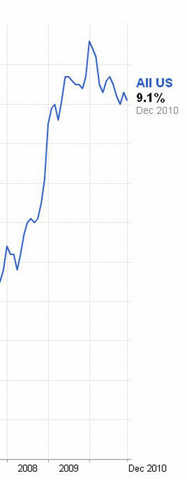
People need to supplement their income; they’re excited about photography; they’re been trained to know an F-stop from a shutter speed; Craig’s List and eventually Facebook, sure seem like an easy and cheap way to advertise – the new breed of weekend wedding warrior is born. And, they are entering the wedding market at an exponentially increasing rate.
Facebook and iPhones Too!
Facebook and smart phones gain amazing popularity during that same time period – more strong winds to fuel the strength of the perfect storm. Just look at the growth of Facebook’s popularity over the last three years – unbelievable!
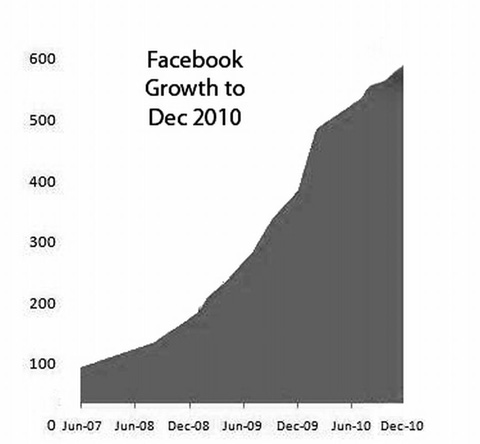
Smart phones, and P&S digital cameras make photography more accessible to everybody, Facebook makes the sharing of any photographs easier than ever to with family, friends, actually the world. Are high school wallet photos even necessary any more? This combo begs the question, “Is professional photography even relevant anymore?!
OK, OK – I know I’m dropping many doom and gloom “bombs”. What I’m trying to point out is that this confluence of circumstances definitely moved the photographers’ “cheese.” And it has happened excruciatingly rapidly over the past 24-36 months, and most photographers never saw it coming.
Folks, that means it’s imperative that we think differently, create differently, deliver images differently, and most of all, do business differently if we are going to survive in the brand new field of digital photography. Mark my words; it definitely is a brand new playing field out there!
But “surviving” is not what we want to do with photography as our chosen profession. “Surviving” is what people do on life rafts. I, for one, would never want photography to be a “life raft profession” – with me out there just trying to make ends meet for my family. That doesn’t sound like much fun. I would rather it be a Robb Report yacht profession, wouldn’t you? We want to thrive in this profession. We want to enjoy the excitement of creating wonderful images that excite ourselves and our clients, don’t we? It’s time to find the cheese again. In the second part of this post entitled “Dreams and Opportunities” I’ll show you several ways to do just that. Stay tuned, and … keep smilin’. And remember, as Dan Cook said in 1976 [link], “It ain’t over till the fat lady sings.” And she’s singin’ in the second part of this post ;) Hope to see ya’ then.
My thanks to Scott Kelby for asking me to write this Wednesday’s guest blog post. He’s the inspiration that got me started in 2007 with my own blog and I thank him for that too. Just know that I’ll keep writing if you keep reading. -David
David has shared his message with over 15,000 people in 2009 and 2010 through his tours and training. His 4 DVD set which features his live Captured by the Light 2010 tour is launching this week.
David is also the author of Captured By The Light: The Essential Guide To Creating Beautiful Wedding Photography, one of the top selling books on the subject.
Follow David at his daily blog: DigitalProTalk.com.



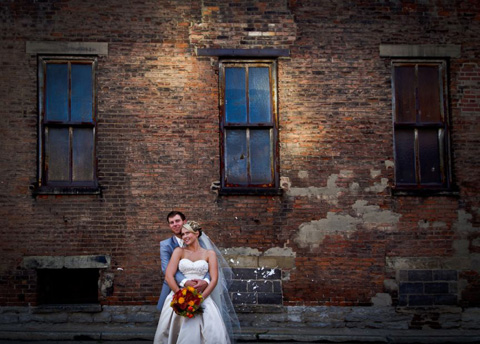

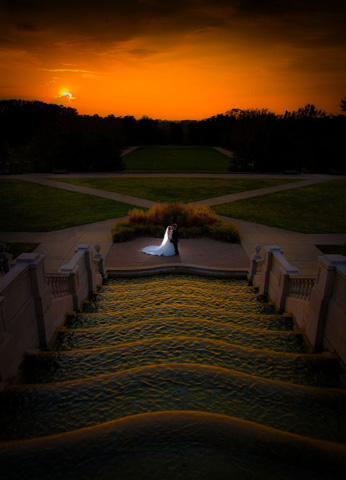
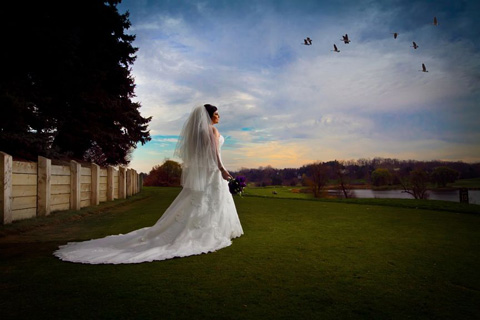

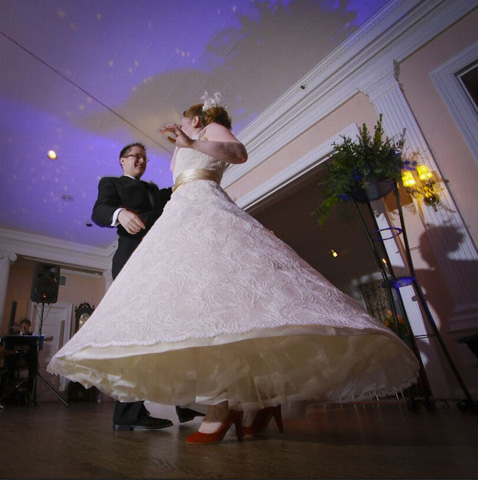
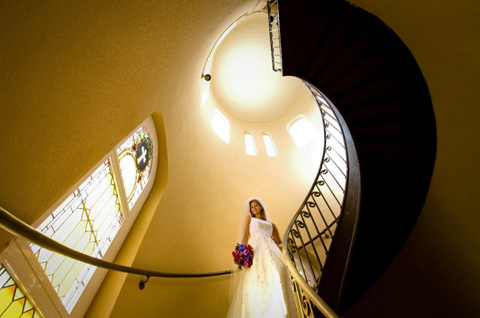
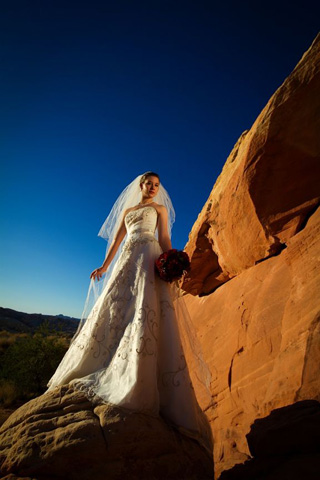
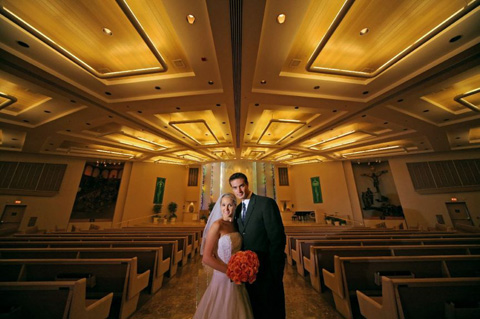
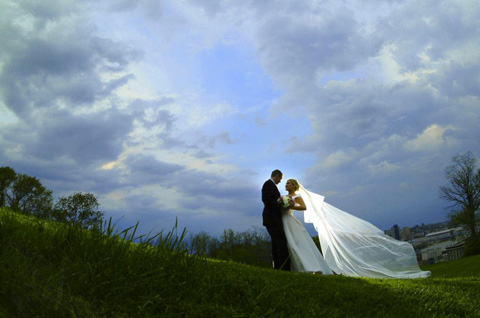
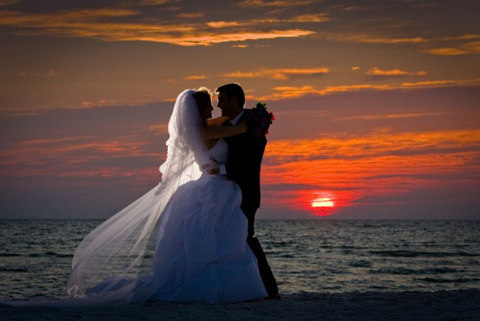
Great guest blog David, I last saw you in Charlotte and your tour is awesome!
Ken
Ken:
You continue to amaze me. David’s blog goes up at 12:01 and you post at 12:03. Do you post, then read the blog? :D
Best,
–John
I’m pretty sure that he only reads the post afterwards. =)
I only look at the pictures. :)
Come on Ken!!
Great post David, wedding photography never atracted me, I prefeer concerts, or different events…
However your photos are gorgeous (even if I’ve already seen some of them at DPT)
Pedro, I went to Davidson “New Dawn” seminar and it was great. Don’t do weddings but it help me with indoor and outdoor portraits. His Kelbytraining stuff is great to for outdoor flash with natural light. I got the QFlash system after attending his siminar and I love it.
Congrats on second! :)
Sorry David, autocorrect.
Hey David,
Another brilliant insight – t’was great to see you when you passed through Denver too – I continue to enjoy the book and refer to it regularly! If only I had the motivation to blog as regularly and shoot/be as inspiring as you do!
David-
Absolutely terrific! And I *love* the pictures you included–these are just execllent examples of a real love and mastery of the craft. The stairway shot, in particular, is just wonderful. Looking forward to part 2!
Don’t forget … part of that “Perfect Storm” were professional photographers that blogged, wrote books, gave seminars, and hawked products telling people how easy it is to make “great photos like me” and to go out and make it on your own. The real good talent has been washed out by “shoot-n-burn” weekend warriors. Many very talented photographers have either supplemented there income (or made the full time jump) to “training” the low-cost and low-quality shooter (or have had to move-on as you mentioned in your article).
Yes David, you looked out the window and saw the storm fronts coming from many angles to make “The Perfect Storm.” One angle you missed wasn’t through the window, but actually in the mirror.
Totally agree. Thanks to Scott and his friends, we all get better at photography so there is more competition out there.
Frank, you hit the nail on the head! The proliferation of digital combined with the tsunami of information on techniques has resulted in a dilution of the professional markets across the board. I’m a very positive guy, but the news in all corners of our profession is not good. Thankfully, I’m in some very specialized markets so I’ll probably survive until I hang up the spurs in a few years, but I’m not optimistic bout the career potential in photography for most.
David:
A super guest blog! I saw you mention that you would be on Scott’s blog on DigitalProTalk and couldn’t wait to see what you would write about today. You hit the nail on the head when talking about the Walmart factor and the influx of inexpensive DSLR’s onto the market. Every Tom, Dick and Harry think they are now a professional photographer because they can afford a camera today that puts pro cameras from only a few years ago to shame. But it’s really the person behind the viewfinder that makes the difference.
I also think that too many people settle for just “good enough” today. I had friends that were recently married and just got a book of all the proofs from their wedding…no formal album, no parents’ albums, or framed photos. All things that were considered mandatory when I got married 23 years ago. It seems like the whole wedding photography experience has been dumbed down to a degree.
I’m anxious to see what you have in store in Part 2 of your guest blog (next Wednesday?). You are not only a gifted photographer, but an astute businessman (yes, I’ve been to your Captured By The Light tour in Boston, and I saw that the seminar wasn’t just about you talking, but about you selling!).
–John
It’s not dumbed down, the wedding photographers have killed the market with their obscene pricing.
This opened up options for the bottom and middle ends of the market to be taken over by the point and shoot service, with low standards and quality.
I’ve read quite a few wedding blogs and cannot believe the self-centered, self-congratulatory rubbish on most of them. Concentrate on good service for a fair price, not rip of pricing!
I’ll stand by my “dumbed down” comment above. I feel that a lot of new “event” photographers underprice themselves to get business, because they are starting out and they don’t do all the extra stuff that David (and others like him) provides to his clients. It’s now the norm to have cheap books with just proofs in it, or CD’s with images that are taken to Walmart to be printed or posted on Facebook. No more leather bound albums that you would be proud to show off to your friends and family, eliciting the oohs and aahs!
I attended David’s CBTL tour last year and he had on display the books that he uses for his clients (gorgeous!), plus some other cool things that the bride would love to have. Granted, the images that he makes are unbelievable, but I feel that people really need to see and touch these products to truly get a sense of their value. The new photographers don’t want to invest in this type of marketing to make their business stand out from the rest. So they dumb it down and make it as easy and cheap as they can. Unfortunately, the brides go along with it, because they never see what they could have had.
Does David charge obscene prices for his services? I really don’t know. I do know that his photos and how they are presented are miles above most others out there, and I think that many brides will see the value in that.
Just my .02! :D
–John
John, I think the point you make goes exactly to David’s Wal Mart Factor. My stepdaughter’s photographers were adequate at best.. horrible lighting, poor posing and I could go on and on.. and their price was high.. but my stepdaughter and her groom loved them.. They don’t know any better, and didn’t like the price of the truly professional photographer in their area.. they also like their photographer because their photos looked “cool” on facebook..
This post was fascinating and very educational. Thank you so much for taking the time to write this. Very helpful!
Great post David. I’ve heard you speak on the Kelby Training and enjoyed that. Very well put – it is ironic that Bella is now part of the Sears and Wal-Mart conglomerate too!
Great post – really can’t wait to read part 2. Will that be up tomorrow, or on your own site, or next Wednesday? Also, that third photo is just sublime – truly a gorgeous image.
I think this post is very interesting, especially coming from someone who has been in the business for over the last 20 yrs. I think pricing had to be brought down – because like you mentioned everything boomed and all industries wanted a part of that spending. Regardless of “who moved the cheese” the world around us has gone digital. Everyone can take a photo now with their iphones, etc. There are very few people who don’t have a digital something or other to take a photo with today. That was not the case 10-15 yrs ago. Tables were covered with the throw away camera. No one uses them anymore today because they know their guests all have a camera with them. I agree that way too many people have become photographers without duing the due diligence – from learning how to do business right, to truly honing in on the craft of photography, the artistry of it all and not just copying the works of others.
I do NOT agree with the comment above that you and others like you who offer training to non-pros or semi-pros are the problem. You are doing all this change a great service – better to offer training and help the industry remain what I knew it to be years ago – professional with talent that always set everyone apart – style that showed the photographer cared about the clients happiness with the product.
This is something I discuss frequently with many of my photo friends. Just because you own a fancy DSLR does not make you a professional photographer. It makes you a person with a fancy camera. A professional photographer is one who knows how to use it and does the client justice with all ends of production.
I personally have found that people just want the CD so they can go to the lowest end print shops for my work. They rarely want the large prints, canvases, or photobooks. They don’t see the worth or value because all they want to do with them is plaster them all over fb without your watermark on them. I still can’t get over that one. Oh well. Times continue to change and I look forward to your next post!
God bless you for the time you invest in others and keeping this industry professional!
That’s a great post there. Very much exactly what has happened. His experience does count a lot. Lot of reading and then writing this guest post, worth it. Specially for us.
“That’s the camera I shot my first digital wedding with and the images were fantastic for a 3.2M camera.” Will you still do it. Will people still accept the shots with this camera.
Cause now days everyone uses cameras like 5 D Mark II etc. Can someone do professional photographs with Canon 500D or 550D with a decent lens.
I am looking forward for the second part.
David thank you for your well informed insight into the wedding photography market.
What most of the new breed of warriors you mention do not realise is the reality of photographing a wedding. They see the glamorous side of things and dream of creating images to the standard you create. Little do they know how many years of learning and refining one’s craft, people, organisational and business skills that it takes to be a true wedding photography pro!
Here in the UK we see a lot of photographers prefixing the word ‘photographer’ with ‘professional’. As soon as I see this I know they are telling me something they are not – my tax consultant, dentist or lawyer do not need to do this.
Wedding photography has to be one of the hardest areas of photography to get right, it is also the hardest in which to gain experience. I have a client sending me work for critique who included some wedding images from someone who is supposedly training him in the craft of wedding photography. When speaking he dropped in to conversation a comment about how the photographer was having difficulty getting payment from the couple in the images – I can see why – turning the comment around I guess they had refused to pay the photographer the 4 figure sum as from what I could see, their treasured wedding images were no more than a series of snaps. Not photo-reportage, no creative input from the photographer, just snapshots that anyone could take, not make.
Just like other professionals, photographers have to make a living so should give clients quality images for a fair price. Fair pricing does not always mean inexpensive or cheap. After all, the images from a wedding day are emotional triggers for many memories to come. Those memories should be happy ones for all those concerned and photographers should make sure they are remembered for the right reasons, as people will always remember their negative experiences over positive ones.
All the best, Ian
If anything answers the question, “what do you lose when you don’t have a professional photographer for your wedding?” it would be the pictures in this article. Your work is outstanding.
David,
Very insightful post. I couldn’t agree more about the marketplace being more competitive with the onset of the digital age. I have enjoyed your books and KT videos. Thanks for sharing your wisdom!
Wonderful, wonderful article! I’m not a wedding photographer, yet I read every word you wrote, David, top to bottom.
This was very encouraging: as you message states, if we can isolate the problems, we can find solutions.
Can’t wait for part 2!
One of the best guest blog posts I’ve seen on here. It was good to read an analysis of the downfall of professional photography, because I haven’t really seen one. I’ll definitely be tuning back in for part 2.
Umm, you may want to re-write these 2 sentences:
“The real market mover came when was Canon’s 30D introduced in mid May, 2000. Then came the D30, and then in 2003 the Canon D60 – cameras in the $1,500 price range.”
D30 – May 2000
D60 – Febr 2002
30D – Febr 2006
Great blog! Thank you for that.
because the 20d Aug 2004
I’m not a wedding photographer, but I’ve seen what you’re talking about. A friend of mine got married this past August. His wedding photos looked basically like anything I could’ve done had I not known about lighting or background scenery (but he was “professional” because he had 2 camera bodies!). But they were happy with them, so I kept my mouth shut.
David,
As always insightful and interesting! I look forward to part 2.
I thought that it might be interesting to tell you the story of our experience with our chosen wedding photographer. She was a friend of the family, and had shot my wife’s cousin’s wedding and they seemed pretty happy. We were trying to do things on a budget as we lived abroad and were already paying for flights and hotels on top of the honeymoon etc.
We asked that she take relatively informal photos during the wedding and reception, as we aren’t huge on posed shots. We saw her walking around taking pictures and we put our trust in her.
When we got the proofs from her a few weeks later, the first thing that happened was my wife burst in to tears. As it turned out the pictures were awful and other than taking pictures of the bride and groom during the wedding there were no pictures of us together at all during the reception. In the end we had to force her to photoshop one picture just so that there was a half decent picture of the two of us. She even tried to make us pay for the photoshop work (which we didn’t)! It also turned out that she was using film and so was limited as to how many shots she could take – considering this was only 2008 she should have had at least one digital camera in my opinion!
My wife wouldn’t let me get involved in any of the negotiations, but as far as I was concerned she didn’t deliver on her end of the contract and I was ready to demand a refund.
In hindsight, I wish I had asked my brother to take them as he has been published regularly in New Zealand and runs a photography tours business out there, but I felt guilty as he had come so far to be a part of the wedding I didn’t feel it was fair to ask him to work, or gone to a local professional.
I regret the decision that we made, and I would be the first to tell anyone planning a wedding – go to a professional, look at their work and make your decision based on the quality of their work, and then take look at the price. When you look at the pictures in years to come you want to smile – not frown.
Today is our wedding anniversary and my lovely wife gave me Captured by Moose Peterson (I already have Captured by the Light) and I gave her a digital photo frame so that she can take some of my images to work. I don’t consider myself to be a “person with a fancy camera” as Jill mentioned in her earlier post – I’m a keen amateur who wants to improve and I for one am very happy that Scott, David, Moose, Matt and all the other trainers that willingly share their experience and knowledge are out there for people like me.
Happy Anniversary man, sorry to hear about your experience. Thanks for sharing :)
Thanks Brian.
One of the best reads lately, thanks! Look forward to Part 2…although I’m not sure there are any real solutions out there…but if any exist, you’re a perfect person to point them out.
Nothing a hot bath and fresh razor wont take care of. Hope part 2 gets here soon
David,
Great post! Thank you for sharing your insight on the industry. When can we expect pt. 2 of this post?
It’s really too bad that a lot of people get caught up in price and base their decisions on a price point alone. That’s why our portfolios are essential. I think people know the difference between good lighting and bad lighting. Sometimes they just need to see it side by side. If you took two nearly identical images side by side, and the only variable was horrible lighting vs. great lighting, they are going to see the difference. I think it’s all in how you present it to the client.
There are people who want Uncle Joe to photograph their wedding. And to be completely honest, that’s totally cool with me. Because the client who has Uncle Joe photographing their wedding wasn’t going to hire to me anyway. They are set on a price point of “free,” so it will most definitely show in the results of the images. Uncle Joe will be using his built in on camera flash and casting horrid shadows in nearly every shot. We’ve all seen it.
David hit on some really great points here in this post. “We think differently, create differently, deliver images differently, and most of all, do business differently if we are going to survive in the brand new field of digital photography.” I believe he’s absolutely right. Because in today’s world, everybody is a photographer. But not everybody is a “great photographer.”
It’s all about vision. Read David DuChemin’s book Vision Monger’s for more on creative vision. Jeremy Cowart is huge on creative vision as well. You can have a greatly lit shot, but if the composition isn’t interesting or the content isn’t interesting, how is it different from anything else?
Great post and image selections David. The age of a new wedding photographer is younger as they can see the image on their screen and adjust accordingly. Charging $1500 or under is a lot of money to them compared other opportunities yet not enough to feed a family and make a carreer. There will always be a market for the low budget and this is a not a real issue. The real headwind are decent wedding photographers who are stay at home moms supplimenting their income but don’t live or die by the booking as the husband is the bread winner and had the benefits. They are keeping the price down for the extra money. That is something the market has created and must be dealt with. Shooting, marketing, customer service, everything has to be exceptional and obvious to the non photographic eye to compete above the $3500.00 base point I think Looking forward to part 2 and hope it is next week.
I agree most with your post. Simple and too the point.
Well put, Steve!
To be subsidized in a competitive market by any means is an unfair advantage that brings tumultuous change to an open system. But ” fair” doesn’t enter into the bottom line. Let’s hope David’s Part II post has the equalizer!
But let’s do be more careful with our gender-specific nouns and pronouns here; I know your usage was intended for simplicity but many would find delight in roasting us over an open fire. ;)
If you went to a seminar or workshop in 2005 or 2006, your would see 80% men over 35. In the last 2 years it is 90% women under 35. This is America and it is fine, the market works it out and it is happening. We have Tech. changes making photography easier, housing is so depressed people do not feel wealthy and the middle marrket is not going to ever spend like they used to. This is going to weed out the mediocre shooters and mediocre marketers. The high level is there and you must shoot well and be in a viable market to make a living. The low level will keep busy and always be there with influx until people can’t support themeselves once they want a family and a retirement. The middle will be a lot of stay at home moms or dads supplimenting income. This volume is what makes it hard for the full time pro. Exceptional shooting and education is the key. You HAVE to stand out from the medicore shooters, who can make a nice image, Real pj moments and grea composition are going to be the key to separate yourself from the pack if you are a single shooter. Educating potential Brides on this is essential. If you have the biz skills getting three or more teams of young shooters each weekend shooting low end weddings will make you a nice living. Manage expectations well though with this model.
C’mon man, save the PC stuff.
Great post David. I might also mention that this digital revolution has also destroyed the newspaper industry. With everyone getting their news via the internet, not many folks are buying newspapers anymore. The record industry has also been hit hard with illegal downloads through web sharing and the like. It seems that any industry that has been digitized has also been downsized and with fierce competition coupled with a bad economy, fees and pricing have taken the proverbial nosedive.
Maybe “professional photographers” should take stipulated courses and be licensed and bonded. If barbers and hairdressers must do this then why not photographers that charge for their services. I think you would see a dramatic decrease in the number of weekend wedding warriors and a subsequent increase in pricing and quality of images.
I am one of the new guys calling himself a professional, and I’m also teaching others, both on my own, and through the community college. In high school I shot a cheap pentax knock off, and didn’t own another SLR until my D90, which I bought in the Spring of 2009.
Both David Z and Scott have been mainstays of my daily routine ever since. I shoot and learn, and learn and shoot, and make better images all the time. I’m also working hard to learn the best business practices.
I too just quit my job as an engineer to do this full time. I think this is the way it goes with all things: you really do have to start somewhere. Unfortunately, many locally established pros have become curmudgeonly about sharing and teaching the new comers. Fortunately, pros like David realize that newbies don’t compete for his clients, even locally.
Teaching others is good karma, and I think David will testify that it doesn’t hurt his business one iota to share with others, and in fact increases his business.
Amen to what Levi says. One of the greatest things about Scott, NAPP, and all the folks associated with it is their willingness to share their knowledge and teach others. What a gift to be in a position to bless so many people.
Think about this 50 years out: That DVD they got instead of an album will no longer be readable in 5-10 years. Those single prints were in a shoebox that got lost in the last move (or was it the one before?). Oh and did I mention that those BigBox prints faded after 20years. Where will those FaceBook pictures be? Or that videographer’s YouTube video, that everyone watched exactly ONCE. In the 60’s it was 8mm, the 70’s Super 8mm, 80;s beta then VHS. If their DVD or BlueRay disc survives will they have anything that can read it (no it was definitely the move before when we threw that old player out).
My point is this: They can sit on the couch with the kids and the grandkids without the need of any special device and look at the album. Their kids and grandkids will pull it out from time to time. Your customer will NEVER throw it out or lose it.
They may not remember your name in 50 years but they will be eternally grateful that you talked them into that expensive album as they place it on the table at their 50th anniversary.
We are not selling images anymore we are future-proofing memories.
I couldn’t agree more – but once I mention that that big beautiful, futureproof album will cost $1000 plus – poof – well Photog B was just going to give me a DVD so I can print them myself……..
Great article David, I have seen the same thing mentioned a number of times on some of the photography forums I am on. 1 point I would like to make though, I think the interest in photography has always been there in the general populace but during the film era the price for entry was still higher than it is today with buying film, developing film, buying books to put those images in etc…now once you buy the camera & memory card your cost is basically zero to shoot thousands of images…a very sweet incentive indeed..and one that the populace has recognized.
With that being said, I hope to one day get my images to look like yours, ones that will blow people over compared to the p&s crowd…then I will know I have “Arrived” so to speak…keep up the great work..
Great post analysing what has happened and I look forward to the next part about dreams. :-)
Great post David. I can understand that the market has changed but I think in the long run the good pros will stay. The people who were looking for a bargain and eventually got deceive by the non-pro results will certainly share their frustration and the next generation will be more wary of taking their chances on a cheap photographer.
I’m an amateur photographer and I would never agree to shoot a wedding (I could shot a couple of pictures for fun but that’s it). Even last weekend, a friend told me that I could perhaps shoot their wedding and the response was clearly “no way” on my part. This is a very important moment in someone’s life and I would not dare screwing with it.
Totally agree! I had the same experience, and I flat out refused. Too much pressure to get thing right. I can take a zillion photos of a flower, and I don’t have to worry about time constraints or missing “the shot”.
–John
Finally, a big-time pro observes the same thing I’ve seen the past three years. I’ve gone from the $1,500 wedding being the norm to having to beg for a $500 wedding and give them the files, at that.
I agree with David on everything. And as bad as it’s been for shooters like David, who is in an affluent market and has the skills to set his work apart, it’s even worse in Wal-Mart economies where the average wage is $9 an hour and an expensive wedding is $3,000 for everything. In these markets, no matter how you set yourself apart with artistry, the folks aren’t paying for it. That extra $500 for the photographer will buy a lot of beer.
I did 2 weddings in 2010; one at $600 and one at $1400. The $1400 was an all day affair, with a big engagement session ahead of time, video of the couple to pay at the reception and video/photography of the wedding, album and 1-hour DVD. My laptop died the day after the wedding and the profit was ate up by gear.
So we’re between a rock and hard place. I have no weddings on the books for 2011. I’m doing a bridal show and if that does not generate any leads, it’s time to shut down. I’m down to charging $495 for four-hour package with all the files and still not getting work. It’s time to do something else.
I look forward to David’s next installment. I have great respect for him. But he’s in an affluent market, and things look a whole lot different in a Wal-Mart economy.
Good luck Carl. Hopefully this economy can change around soon.
I can’t believe the lack of mention of photoshop helping to save a lot of amateur event photography from complete disaster when they fail to nail basic exposure. I think photoshop helping with post-production has given many of those a parachute when in the past their attempt at photographing a wedding may have just let them crash.
ie Kevin Kubota actions.
Not a wedding photographer here…… but a great post for portrait photographers as well. Thanks.
Hi David: Met you a couple of years ago now in Buffalo. Your workshop was one of the best I’ve every taken. I’ve been shooting pro for over 35 years now (mainly photojournalism) and teaching for the last five and here’s what I’ve learned.
First, everybody who said there were no jobs in journalism (or news photography) never found work. And, second, talent – I mean real talent – is always in demand. That’s why you’re still working my friend :)
Great post. Really thoughtful and waiting for part II.
Thanks David, a nice insightful post and your images are wonderful.
One of the best ways to “beat” the competition is to create truly beautiful images,
and you do.
Enjoy your blog, as well.
A thought provoking article, David. The length and quality of the responses above reflects the thoughtful quality of the original post. I look forward to reading part two.
As an aspiring amateur looking to go semi-pro, I may be perceived as a threat to professionals. I can tell you this: the bar of excellence is being raised daily. Digital equipment, software, online social networking, internet access, and overall variety/options is on full tilt. To survive and prosper as a professional, being a great photographer alone won’t cut it. You need to be neck deep in all facets mentioned above. This can cause a lot of anxiety to pro photographers who didn’t have to do this years ago. But to stay in the game, participants must.
No one can out gun cookie cutter results like the Costcos, Sams, Walmart. That said, some people are perfectly OK with cookie cutter results – especially when they are on limited budgets. Can I produce (at the very least) results matching that of these big boxes? I would HAVE to in order to even consider making money from my services. What will give me an edge? Exposure. With social networking, websites, blogs, etc. available at your finger tips – you need to take advantage of that. Put your personality out there. And here’s another thing, people go to Sam’s for their wedding photos go to Sam’s because they strolled by their “studio” while picking up a tire or a couple gallons of milk. They “noticed” the service is available at Sam’s.
Exposure is a powerful thing. To me, that’s my competition. The little guys trying their hand at a wedding shoot is going to realize that there’s much more than just having a fancy camera. Are they willing to take that next step? A tremendous percentage won’t.
Timely post.
I am one of those shooters who started with a weekend shoot – burn – done workflow.
I personally think that circa 2005, good film shots were about on par with mediocre digital shots – and pretty much anyone could spit out mediocre digital (and I include myself in that category).
But, with the evolution of online blogs and instructional information available for semi-pro shooters, a real visual difference is re-evolving between pro/semi-pro shooters and Uncle Joe – where quality original captures are paired with quality post processing.
However, there is a noticeable lack of information on the business side of the industry. I have ran another small business for years, so I understand the concept of time is money – but a lot of shooters don’t.
For example – one of my biggest problems is print orders – where the Wal Mart effect really comes into play. If I process a digital image file, a 4×6 print or a 24×36 print – my workflow is pretty much the same. If I sell a 24×36 print, I make money – but clients repeatedly expect me to sell them a 4×6 for $5.00 – or even worse, email them a full resolution file for free. I have even had clients email me links to budget online printers asking me match their price and print fifty 8x10s for $1.00 each.
If more shooters had access to decent business information, I think the Wal Mart effect would be less of a problem – because no quality shooter would give away free high res files – or print $5.00 4x6s – but that business acumen is sorely missing from the industry in general.
Amazing article, great job david, you always make me think!
Great post David.
There certainly appears to be a race to the bottom in all aspects of life these days, not just in the photography field but in every conceivable facet of modern life.
I personally have been downsized 5 times in the past 10 years from this ridiculous race to make sure the CEO’s all get good stuff. From all my bitterness at status quo, I have been able to make a survivable living fixing several faux wedding photographers boo-boos through my once sideline and now principle business, photo retouching and restoration.
Without this new breed of digital doofus, I would not have a single pixel to push, one way or another.
Thanks for the article David, I too await part 2. I will admit to having been one of those beginning photographers that thought jumping into shooting weddings was a way for quick money.
What a mistake! Just because I have a good eye for composition when shooting landscapes and nature doesn’t mean that it transfers over to wedding photography. I photographed two weddings and found out it is VERY difficult work. Lighting was bad so my shots looked bad. Photoshop/Lightroom helped but anyone could tell they weren’t from a professional. Better than Uncle Joe but certainly not worth the fee I charged.
Thank you for your honesty. There are still many unscrupulous people who have absolutely no remorse for taking some unsuspecting couple’s money for a once in a lifetime event with the promises of lower prices without following through with even half decent photos.
Photography is NOT the only industry to see this down turn in what the customer wants to pay for a service, it is everywhere. I’d be very willing to bet that the “pro” photographers that complain about customers wanting thier services on the cheap are the same way with professionals they have to deal with outside of photography.
I am a very succesful professional in my field with well over $50,000 in the tools of my trade but still willing to share my knowledge with those that “should” be paying for that knowledge. Why? Because it comes back to me in the future! I have customers that never ask what something will cost, they tell me what the want done and know that they will get the quality they demand at a price they know is fair.
I’ve had to deal with the “elite” of many trades and will never have their attitude that I am better than everybody. Many “pros” of many trades have priced themselves out of work because they “think” they deserve that fee. In todays economy that is not a plan for long term success. The big box and discount stores are only getting bigger, the availability of online anything cheaper is not going away. If you ignore those facts you too will be doing something else in the near future.
People who are willing to pay for qaulity work are always going to find the quality providers. If you are one of several of those quality providers you better be the one with the one with the best attitude, and thats never the one with the “elitist” attidude.
Times have changed, business practices of the past, even the recent past, dont work anymore, business as usual has killed many companies. You must be willing to adapt, adjust, get over your self and move forward with the current trends.
Well said.
Thanks for the Article David. I think it would be totally unfair and biased for me to say that what I have to say is the absolute truth, but here is what I have seen:
Photography is becoming a commodity, of course prices are going to come down.
========>> What does this mean??? It means is that in order to survive you have to capitalize on the most important thing that a Wedding photographer has to offer, and that is the…..gasp….. emotional experience of the wedding day.
Wedding photography should not be about how to get a rembrandt pose, its about capturing two people in love. I honestly believe that my best skill as a learning photographer, is actually who I am as a person. That may sound super corny, but its true. The best jobs are going to the best people, period. And by best people, I don’t mean “good customer service”..trust me that doesn’t even come close.
I have not seen much in these comments that even comes close to the real reasons this profession is getting tougher. Sure all the things you have mentioned in the article are relevant and true.
All those folks are still looking for a good wedding photographer. In my opinion, they are looking for a good wedding photographer who doesn’t take ANYTHING for granted, and who has a heart thats bigger than you can image, because guess what thats what the competition is providing in a lot of cases…
Oh ya and guess what?…they also expect, WORLD CLASS PHOTOGRAPHY. Yes, thats right, you heard me. Anything less than world class doesn’t cut it anymore.
Don’t even get me started on Album pricing… Guess who makes the money on Albums? The album companies and the photographers, guess who suffers…the CLIENT.
I am sorry, sticking photos in a book should not cost $500+ (at cost). We, as photographers have to get that cost down to $200, and eliminate the album makers as the extra middle men.
Customers are savvy these days. I am 29 years old, and I don’t know any of my friends who would book a wedding from a photographer who would not give them full resolution digital images. Things are changing folks. If you want a piece of the business, figure out how to sell your product (your photography), NOT your products…
To be blunt – I am in business to make money.
I love what I do. I love (most of) my clients. I love creating awesome images. But if I cannot make money – there is not much point in being in business.
I cannot make money by giving away my work. I cannot make money by giving away my time.
Since album pricing seems to be a hot issue – lets take a look at whats involved:
Album Cost $200
Purchase Album -10 min
Consultation with client to select content – 30 min
30 photos edited & adjusted – 10 min each = 300 min
Upload photos to printer – 20 min
Assemble album – 10 min
Deliver Album – 15 min
Invoice & Accounting – 10 min
At the end of the day, I have about $200 and at least 6.5 hours of my time (usually quite a bit more) invested in that album.
JP, I think you missed Caleb’s point, and perhaps David’s part 2 will hit on this …
The focus in the past was on the physical product. People want to buy the rights and have the freedom to do what they want with them.
So showcase what pro photos look like, prove the value and charge for your talent – the making of the photos – not the commodity.
Movie Theatre’s – VHS – DVDS – Online Movies, … everyone is still making money.
Very good entry. I am a hobby photographer that has been doing it for years; recently things have started to click as far as learning. I know what good photographers can do and I don’t think I am near their skill levels yet. What keeps me interested is that I feel I can get better and strive to obtain “professional results” with education, lots of practice and spending some money on some nice equipment that makes learning easier. I look at all the photographs I make and try to think of how a top professional would look at them – I am not satisfied because anyone off the street thinks I take great photographs. I am very excited to learn more and more each day and thankful that photographers like David, Scott and others are willing to share their knowledge.
As far as digital, wal-mart and people wanting something less, but different – I agree that most people want a deal and really don’t understand the difference between a good or great photograph. I am sure portrait painters went through the same thing when photography was introduced, but the great painters are still great painters….
Ok I will try to be short and sweet:
To David,
1) I agree with alot of what you are saying.
2) I think alot of Wedding gigs are going to the Younger crowd. For these reasons:
-They are just as good or in some cases better than the “old guard” for reasons already mentioned in your post.
-Wedding photography is about providing an emotional experience, not a customer service.
-They talk the same language, they grew up together, they know whats in and whats not.
-If you don’t understand current fashion, then you won’t be a wedding photographer for me.
3) Product pricing is way to high, thats just a fact. I blame the photographers, not for ripping off clients, but lets start with accepting ridiculous album pricing, and not looking to cheaper options. Photographers are partly to blame for passing on ridiculous album pricing to their clients. I am sorry, I work for a printer company, paper and leather binding with a hot stamp does not cost $500….not even close.
I could go on and on, suffice it to say that photographers need to focus more on their product(photography), and not their products.
And basically if you are not a fun, nice, amazing person, with a good heart, who I would want to have a beer with, or I would let babysit my kids…….there is no chance you would ever be my wedding photographer, and that is how all industries are headed.
I assume you are going to hit on some of this for your part 2. Thanks for posting!
He wasn’t saying they are going to the younger crowd… they are going to any monkey with a camera, there are plenty 40 sums out there hocking their snapshots calling it photography too.
Times are changing with a generation that thinks it is ok to steal music, images, software or anything else that is creative. Licensing is out the window with the free for all they call the internet and because of this free for all and the proliferation of information just a click away the perceived VALUE of any professional SERVICE has plummeted.
Why should you pay for professional images done by a professional, uncle charley can do it with his Digital Camera and DIY cardboard softbox he made from a tutorial on strobist and has watched all of Kelby’s seminars for the $29 trial fee, just look at the cool pictures of his dog and car he posts on facebook.
The cream will always rise to the top, problem is there are less and less that want the cream and will just take it black.
Even if I didn’t read a word of this post—and I did read it—I could sit here and look at those images all day. So beautiful. What an inspiration!
Parabéns!!!!
Você tem eu como seu fã aqui no Brasil.
Muito Obrigado
Reading david’s post was really great. I’ve seen the responses from everyone here from the good and badd and it doesn’t surprise me. The thing with me as a person that likes to take pictures, people assume i’m a professional because i like to take pictures. I never once put myself out there as a wedding photographer, but most people figured if you have a camera, like to take pictures, then you should be good enough for me to shoot your wedding.. I’ve fumbled way to many jobs with lack of time..because most weddings go quickly and the bride and groom feel your taking too long or a parent speaks up and says “could you please hurry up”..or were going to leave soon..not ask is it ok but “i need to get my picture done so i can go” I feel it’s a lack of respect to someone learning, but most part a lack of respect in general!! I thought after three years i would start enjoying photography and helping others, but i hate it..I once was in love with photography..enjoyed every aspect of learning something new. But right now..wedding photography needs to be left to people that are professionals..and i mean “master photographers” like david.. If you want a wedding for less then a grand your going to get either a good job or a not so to your liking! I would give anything right now..to have a spark of inspiration from a “master photographer” and be taken under their wing and say “I can help you”.. because people…either you pay for a great photographer that can time manage a bride and groom and wrangle the family from taking over..Get used to the anyone with a camera can do it for you because it’s more coming down the road then you think!!
About five years ago I was asked if I would do my first wedding.. I said no. I was offered good money. I said no. I was kissed and hugged by the bride and I still said “no”…. Why? Because I knew deep down I wasn’t ready/GOOD ENOUGH! I would hate myself to put substandard work to a bride on a once in a lifetime situation. I think ALL “weekend warriors” should ask that question of themselves …”Am I Good enough?”. Remember, You REALLY dont want an angry + married woman and or her mother coming after you…Thats why I dont do weddings!
Me too.
I wonder how many people who scuff at clients using low cost online printers use online stores such as BH Photo to buy their gear? Isn’t it a little two face? Customers want service, quality and then price. Most people do not know quality anymore so it becomes the job of a professional to educate the client on what to look for even if they don’t get hired. People see so many bad pictures shot from cell phones that any picture that is clear looks good. To me a professional is someone who can produce results day in and day out. It doesn matter if the venue was dark, or it was blinding sun, they know how to work their gear to make it produce images that will be cherished
Maybe I’m misinterpreting your comment. But, I buy from B&H (and Adorama from time to time, as well).
B&H has possibly the best customer service I have ever come across in my 43 years. When I bought my 5D in 2006, the rep spent well over an hour on the phone with me talking me out of a larger purchase and explaining why the 5D was more than enough camera for my needs (at the time).
We are always seeking ways to improve the services we offer to our customers; I’d very much welcome any feedback you have that could help us to do this: HelenO@adorama.com
Helen Oster ?
Adorama Camera Customer Service Ambassador
http://twitter.com/HelenOster
David’s business is incredibly demanding and competitive and he is a master of his craft. Having said that, the idea that he would take the time to discuss the challenges of surviving in today’s world and promise to follow up with real executable ideas is a testament to his professionalism and support of the “paying forward” concept.
I await Part 2. Thanks David (and Scott) for challenging us to think about the business in new ways (because we must!).
Nicely done David. In the meeting and event business we have experienced many of the same challenges over the last few years. (At least you didn’t have the President and notable Senators saying “Don’t get married!”) We have seen a comeback, but with constrained buyers and much tighter time frames.
What we are attempting to do (and I think this applies to the wedding pro) is find the new cheese. What can we do to differential our services from the competition, and that competition is just similar companies but everyone who thinks they are an event pro. Sound familiar?
We are asking, what does the new meeting look like in this changing world? How can we shift our thinking to anticipate new market needs and become leaders in the adjusted paradigm? These are questions that everyone should be asking whether they are a wedding shooter, a retailer or a buggy whip salesman. Craigslist, Facebook, phone cameras are all symptomatic of the new demand for the experiential, the crowdsourced and the networked. As a former engineer (and I would love to sit down over a glass of wine and hear THAT story) you understand that everything is in a state of flux and you have to be constantly thinking ahead to the next breakthrough moment.
Exciting times for those willing to make the leap. Scary times for the complacent.
You seem to apologize for the length of your article. In a word: Don’t! This was a very succinct summary of what has happened to this profession. (You could have even added the general diminution of the standards most expect from photographs due to the influx of “professionals” who don’t treat things professionally and simply look to make a bit of pin money.)
Far be it from me to say much about the trends. I had little, if any, interest in photography before the advent of the digital camera. (My first foray into the whole shooting match was with my Sony Mavica with the 3-1/2″ floppy disk memory…a whole 9 photos per disk!). Then onto my Pentax K100d and the rest is history.
If photographers want to do more than survive, they will have to show more value. They (We?) must educate the consumer. We must do more outreach to the consumer. In short, true professional photographers (or even semi-professionals who fear taking the full-plunge) must distinguish themselves from the “psuedo-professionals” who know only to set the camera to “AUTO” and press the button.
Why do you go to a doctor or lawyer and pay what they charge? Because you percieve value that you will not get from simply relying on your Cousin Charlie. (The same can be said for auto mechanics, plumbers, etc.) What do professional photographers offer that Cousin Charlie can’t? We know the answer to that question. Aesthetics. Quality. Consistency. Artistry. If professional photographers can’t offer those things, perhaps they are best left to the brutalities of “the market.”
I have assisted with several weddings. I have shot some portraits. I have not received a dime for those activities. Why? Because I don’t feel that the quality of my work in those areas justifies charging them. My payment is my education. Have I stolen gigs from people trying to make a living with a camera. Highly doubtful. The weddings were done with someone who does make a living shooting wedding photos and who was paid for the work. The portraits were done for people who would have gone to Sears/K-Mart/JCPenney for the portraits had they gone anywhere at all.
Don’t lament Cousin Charlie shooting a wedding. Some true professional might lose that particular gig, but others who will see the outcomes will reel in revulsion at the results and swear that they will not skimp on the photography in the wedding budget for themselves or their kin and will tell others as well.
The key is to be a professional and give professional results. (The last time I looked, Porsche is still selling cars for a fair chunk of change despite the fact that Hyundai sells for less.)
I can’t wait for part 2. When can we see it? Such a great read and so accurate. Well done.
It is a rather sad state of the wedding photography union. But like you say, I think as the economy picks up, people will realize that creating fantastic photos is a lot more difficult than taking average “AUTO” pics. I think there may be more of an emphasis on Photoshop and illustrative skills as opposed to just the raw photograph. Perhaps the new rage will be to add certain effects to photos, such as giving some a painterly quality. The high-end digital cameras are still rather expansive as well, so I don’t see a lot of people opting to purchase those. Even I can barely afford them with decent lenses.
The future of the professional photographer will also depend on the camera manufacturer’s ability to produce high-end camera equipment that have features beyond those of the average or low-end digital cameras.
David, has to be one of the most lucid posts on the state of the industry that I have read in a long time. Thanks Scott for giving David the platform.
This is a compelling and interesting article. While I agree that the unfortunate economic times in which we live will necessarily affect photographers, there are a couple of things to keep in mind: 1) There is evidence of our economy slowing improving now, which I believe will encourage people to spend more on the services of professional wedding (and other types of) photography. This won’t happen all at once, but will be a gradual upturn. 2) While it’s true that anyone can purchase and use a digital camera, DSL or compact, and many brides will encourage friends to bring their cameras and take snapshots, all one needs to do is take a trip through your friends’ facebook albums to quickly realize there is a stark difference between those snapshots and the work of a professional photographer. It’s a lot like watching the initial American Idol tryouts each season. There are those who can clearly sing, and those who cannot carry a tune. Photography is an art and a talent. Some techniques can be learned, but talent cannot neither be taught nor learned. It just is. 3) PHOTOSHOP! Need I say more? You can either use it like an amateur, or you can use it expertly and artistically because you have been using it for decades and know how to use it to enhance and improve the photos you take. Photoshop expertise, like talent, cannot be faked. When people hire professional digital photographers, this is a large part of what they are paying for.
At the end of the day, I think we’ll be okay.
Lynn commented on photoshop but I no longer believe that editing skills differentiate the professional from the amateur. There are very affordable editing services to the masses as well as shockingly simple versions of photoshop that will only improve. Increasingly, amateur photos are looking better and better.
I am inclined to think that only the strongest will thrive: those who adapt and are excellent entrepreneurs and photographers.
Trying to keep one step ahead. Always.
Great article, David. Looking forward to Part 2 more than I wish to admit!
Great post David! I really enjoyed the read!
Great post, but I disagree. I am having my best years with the highest averages. It s only bad for those who insist doing business the same of the good old day.
Can’t say I 100% agree, but you do have much experience and stats to back up your assertions.
I actually believe David (post above mine) hit the nail on the head, however. Things are only bad for those that refuse to change.
You’ve noted many reasons why things have changed — but change doesn’t mean “gotten worse”… it only means “gotten worse” if you can’t find a way to take advantage of that change. The internet made things get way worse for newspapers… but was it ‘bad’ for the news industry? Votes still out… as it is on our industry as well.
As a professional photo lab owner for 30 years, part of my job is to understand how the economy effects my clientele. (It helps that I’m married to an economist.) I’ve seen economic ups and downs in several complete cycles. With each downturn an astonishing number of laid-off people are convinced their “passion” for photography can be their next job. When gobs of hungry beginners enter the market at the same time, pro photographers feel the pinch, and customers realize it’s a buyer’s market. Prices drop and everybody’s scrambling, as we’ve seen again in the past 2-3 years. But the fact is, once the economy bounces back most of the new photographers are glad to take a regular 9 to 5! Work returns for the true pros; the folks who love photography and thrive on the challenges.
What’s different in 2011 is digital photo technology makes every enthusiastic smart phone owner a pretty darn good photographer. How does the professional differentiate herself? Historically, this is always the challenge faced by photographers (and painters before them). Each time technology makes photography more accessible to more people, pros have to carve out new artistic niches.
In the Bay Area and beyond, clever photographers are re-creating themselves to fit the times. It never hurts to punch up your visual style. If you’re willing to push boundaries you can create images beyond the imagination or ability of enthusiasts. There are quite a few photo related services previously done by others: designing cool modern albums, offering videography or matting and framing services. Retro products like black and white film and silver gelatin prints reflect a trend towards simplicity. And with growing numbers of new digital camera owners, the need for more photography teachers may never end.
Its refreshing to hear your perspective Andrea – I totally agree that simple supply and demand is probably the biggest effect on pricing right now. Wedding photography is the easiest point of entry for “P” shooters – (its how and where I entered the biz).
I think the current trend of “photo journalistic” wedding photography also plays into the reduction of fees – because by necessity – shooting a “photo journalistic” wedding means shooting a wedding exactly like Cousin Charlie – “P”, on camera TTL and a whole lot of luck in getting a few decent shots (again, exactly where I started).
With the information that is currently available – pros are creating a demand for new trends that leave Cousin Charlie in the dust – but it is taking some time for demand to build.
Where is part 2 of this post located?
Where is part 2????
Hi David,
Great info on weddings, any comments or insights on the future for Family portraits.
so bezutiful..,deeply love!!!I find the best blog in here…keep up and Support you all the time!Hope you can also come with me to http://www.mmohome.com/.
Really good.I will concern about it.
Diablo 3 Gold
Its amazing.u provide great information about weddings.i ll definitely concern about it.